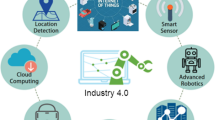Abstract
Networks are composed with servers and rather larger amounts of terminals and most menace of attack and virus come from terminals. Eliminating malicious code and access or breaking the conditions only under witch attack or virus can be invoked in those terminals would be the most effective way to protect information systems. The concept of trusted computing was first introduced into terminal virus immunity. Then a model of security domain mechanism based on trusted computing to protect computers from proposed from abstracting the general information systems. The principle of attack resistant and venture limitation of the model was demonstrated by means of mathematical analysis, and the realization of the model was proposed.
Similar content being viewed by others
References
Cohen F. Computer Viruses: Theory and Experiments [J].Computer & Security, 1987,6(1): 22–35.
Adleman L M. An Abstract Theory of Computer Viruses [J].Lecture Notes in Computer Science, 1990,403: 109–115.
Chen Zemao.Research on Security Architecture of Secure Operating System for Malicious Code Defending [D]. Wuhan: Naval University of Engineering, 2005 (Ch).
Shen Changxiang.Building Activity and Counterattack Framework of Security Assurance [R]. Beijing: The Second Peak Forum of Network Security Application, 2003 (Ch).
Cui Sheng. Where Will Information Security be Oriented and Terminal Security Brings Up Trusted Computing [EB/OL]. [2006-01-06].http://linux.ccidnet.com/art/35/20060105/407977_1.html. (Ch).
Chen Zemao, Shen Changxiang. Operating System Security Based Policies for Computer Virus Prevention [J].Journal of Wuhan University of Technology, 2004,26(9): 75–77 (Ch).
International Telecommunication Union.Telecom and Information Technology Security [S]. Geneva: International Telecommunication Union, 2003.
General Administration of Quality Supervision, Inspection and Quarantine of the People's Republic of China.TC260-N0052 E-Banking Information System Security Assurance Criterion (Draft) [S]. Beijing: General Working Group for E-Government Standardization, 2004 (Ch).
Bell D E, LaPadula L J.Secure Computer Systems: Mathematical Foundations [R]. Bedford: Mitre Corp, 1973.
Biba K J.Integrity Considerations for Secure Computer Systems [R]. Bedford: USAF Electronic Systems Division, 1977.
Author information
Authors and Affiliations
Corresponding author
Additional information
Foundation item: Supported by the National High-Technology Research and Development Program of China (2002AA:Z2101)
Biography: ZHOU Zheng (1978-), male, Ph. D. candidate, research direction: secure operation system.
Rights and permissions
About this article
Cite this article
Zheng, Z., Jun, Z., Jian, L. et al. Protecting terminals by security domain mechanism based on trusted computing. Wuhan Univ. J. Nat. Sci. 11, 1437–1440 (2006). https://doi.org/10.1007/BF02831792
Received:
Issue Date:
DOI: https://doi.org/10.1007/BF02831792




